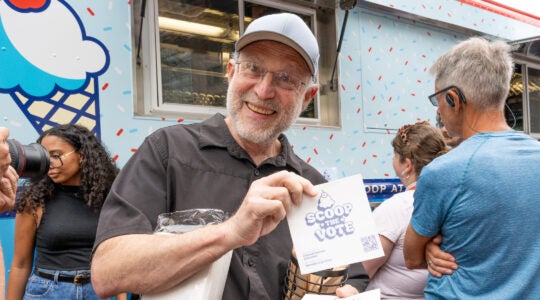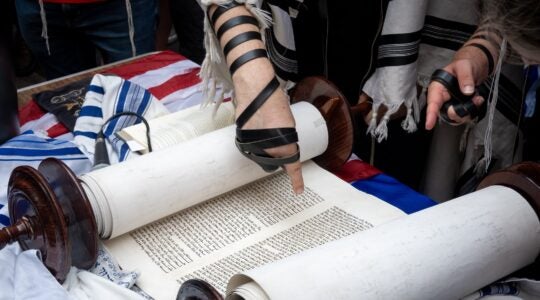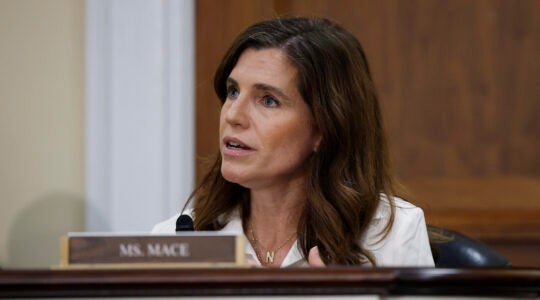In recent years, Chabad-run groups have done remarkably well when it comes to online philanthropy contests.
Chabad representatives were well-represented in last year’s Jewish Federations of North America Jewish Community Heroes contest. In January, Chabad’s Michigan-based Friendship Circle, an organization dedicated to helping children with special needs, won $100,000 when it came in third place in the Chase Community Giving Challenge on Facebook. Earlier this summer, 17 Chabad programs across the United States each received $20,000 in the second running of the Chase challenge.
And this week, Chabad central tooted its own horn by publicizing that eight Chabad-run Jewish day schools are poised to win $500,000 each in the Kohl’s Cares for Kids online challenge.
That challenge, much like the others, is essentially a glorified popularity contest in which organizations are allowed to nominate themselves and then solicit votes from their fans and friends. The top vote-getters win a cash prize. In this case, Kohl’s, the prominent department store chain, will give away $500,000 to the top 20 vote-earning schools — some $10 million in total.
There is nothing overtly Jewish about the Kohl’s challenge — in fact, the contest prohibits winners from using the money for religious purposes — but it was Max Kohl, a Polish-Jewish immigrant, who planted the seed for the 1,000-store chain with a small corner grocery store on the south side of Milwaukee in 1927. And as of Wednesday, 12 of the top vote-getters in the contest, which ends Sept. 3, were Jewish day schools. Of those 12, eight are under the auspices of Chabad.
Fundermentalist’s take: So what is Chabad’s secret?
Well, the skeptics and whiners and some of the competition have suggested that Chabad uses bots to cast thousands of automated votes. I’ll leave that to the tinfoil-hat set to intuit.
Chabad does have something of an advantage over other Jewish groups, but it’s not an unfair one. The Chabad network, which includes thousands of individual outposts all over the world, has proven powerful during these contests, according to Motti Seligson, a spokesman for Chabad.org, who has become Chabad’s social media guru over the past couple of years.
And the movement as a whole has been really good about not cannibalizing its online base. While scores of Chabad organizations may have started out as entrants in the Chase or Kohl’s challenges, the network as a whole was able to figure out pretty quickly which ones had a serious chance of winning. Once it did, the system put its chips down on the potential winners. The method has proved to be especially valuable in the Kohl’s challenge, Seligson said.
Each voter can vote a total of 20 times, and only five times for one school. Hypothetically speaking, that means if supporters of Silverstein Hebrew Academy-Great Neck cast votes for that school five times, they each have 15 votes left. So, in a system of mutual support designed by the Chabad schools, those original Silverstein voters may then cast five votes each for, say, Chabad Hebrew Academy of San Diego, Cheder Menachem in Los Angeles and the Rohr Bais Chaya Academy in Tamarac, Fla. During the Chase challenge, it became clear that the Chabad-affiliated Friendship Circle of Michigan had a shot at winning a prize, so the other 100 Friendship Circle outposts around the country rallied behind their Michigan counterpart.
It’s not cheating or skirting the rules, Seligson said. It’s just actualizing a social network effectively.
“Everything that is created is created for a Divine purpose, and the idea is to use everything to make the world a better place and for a higher cause” he said. “Social media is no different. If there is a way of harnessing that to do a better good, then absolutely do it.”
Not everyone has a Chabad network. But don’t worry — there are still some lessons to learn from the group’s tactics. In terms of winning a contest, the number of Facebook friends an organization has will not necessarily translate into votes. According to Seligson, when the Michigan Friendship Circle placed in the first Chase challenge, it was up against organizations that had up to half-a-million friends. The Friendship Circle started with 600. In the end, though, the organizations with huge followings were lucky if they were able to get 20 percent of their friendship base to vote. Friendship Circle ended up with 60,000 votes.
The key, Seligson said, is that the virtual has to be backed up by the real. Social media such as Facebook and Twitter may be good entry points to a relationship or a conversation, he noted, but actualizing those relationships takes real-time interaction.
For Friendship Circle, that meant generating offline press with publicity stunts and face-to-face meetings in the real world. For instance, the group organized an Improv Everywhere-style freeze at a Detroit Pistons game, enlisting 200 volunteers to attend the game and then freeze like statues for a minute at a specific time. When the minute was up, the volunteers ripped off their shirts, revealing T-shirts that advertised the group’s website for fans and members of the press to see.
In Charlotte, N.C., Chabad’s 220-student Charlotte Jewish Day School used an inside-out approach to garner 45,000 votes by Tuesday, earning it 14th place in the Kohl’s challenge, according to spokesman Rabbi Bentzion Groner, director of the Friendship Circle of North Carolina.
The elementary school has a relatively small base, but it tapped into alumni now in their teens to hold a vote-a-thon. The school, which was started in a basement in 1984 with just a couple of students, enlisted 50 teenagers to bring their laptops to the school, where they spent an afternoon reaching out online to as many of their friends as they could, soliciting votes one by one. And of course the school invited three television stations and the local newspaper in to check out the event.
But, Groner said, the school’s success thus far has been about making it a general cause in Charlotte. First, the group worked on getting votes from its own base and extended network. When it became clear that it had a chance to do well, it went after those who care about Jewish education. When it became clear that the school would be the only one in Charlotte — Jewish or non-Jewish — that had a chance to win, Groner and others went after the broader, non-Jewish Charlotte community.
Groner estimates that about 60 percent of the school’s votes have come from the school’s natural extended base. The rest came from outside.
“We made it about the community,” he said, “and the community really got on board.”
JTA has documented Jewish history in real-time for over a century. Keep our journalism strong by joining us in supporting independent, award-winning reporting.





